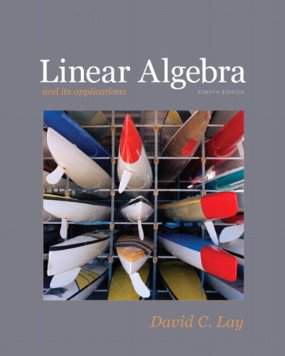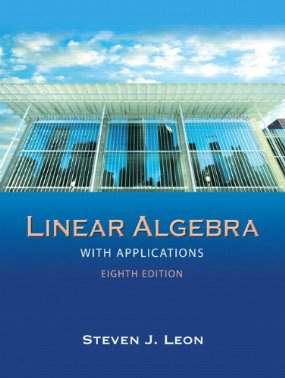Connecting...

This is a quick preview of the lesson. For full access, please Log In or Sign up.
For more information, please see full course syllabus of Linear Algebra
For more information, please see full course syllabus of Linear Algebra
Linear Algebra Homogeneous Systems
Lecture Description
This special kind of system is made up of a matrix-vector product that yields a zero vector. These types of systems will give us a unique basis of a null space, which can be used in other linear algebra topics that we’ll introduce later. A lot of these videos thus far have been introducing topics and not applying them; soon we’ll give applications for the things that you’ve learned, and you’ll see how the topics are relevant to deeper linear algebra.
Bookmark & Share
Embed
Share this knowledge with your friends!
Copy & Paste this embed code into your website’s HTML
Please ensure that your website editor is in text mode when you paste the code.(In Wordpress, the mode button is on the top right corner.)
×
Since this lesson is not free, only the preview will appear on your website.
- - Allow users to view the embedded video in full-size.
Next Lecture
Previous Lecture










































 Answer Engine
Answer Engine




1 answer
Mon Oct 30, 2017 3:41 AM
Post by sorin dragon on October 28, 2017
Hello professor Raffi!
First, I want you to know that you do a great job here and your lessons are really helping me at uni.
Also, I have a question. A few lessons ago you gave the almost same example (I'm talking about the example 2) when you were demonstrating the spanning of the null space. Now you say that the span is actually a basis. How comes that? And if it is a basis, how is linear independent?
Thank you so much :)
1 answer
Thu Feb 27, 2014 7:23 PM
Post by Josh Winfield on February 27, 2014
The relationship between the Homogeneous and Non-Homogeneous systems is truly beautiful. As well as being beautiful , it is also very curious to me.
You said "There is no reason for it to actually be that way, and yet there it is.". Which makes me think, if there is no concrete path leading to this concept, then how did mathematicians find it? Its applications seems to powerful and important to be the product of a mathematician saying "well, lets try this for no good reason and see what happens" and striking gold.
1 answer
Tue Jun 18, 2013 3:33 PM
Post by Manfred Berger on June 17, 2013
I'm used to thinking of a hyperplane as a n-1 dimensional subspace of any n dimensional VS. You called a 2-dimensional nullity in a 5-dimensional space a hyperplane. Can you clarify this for me?